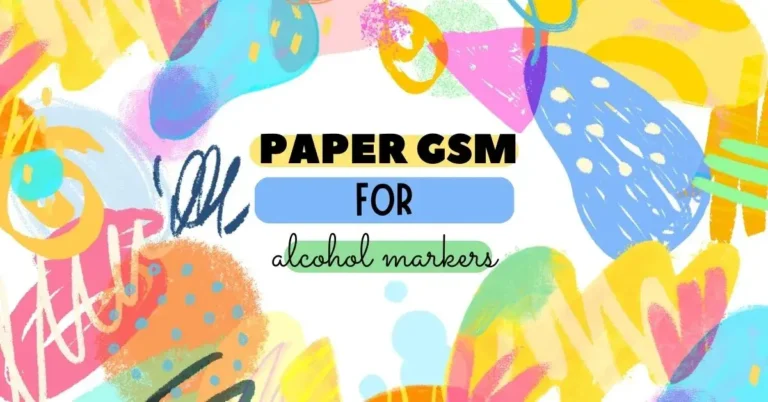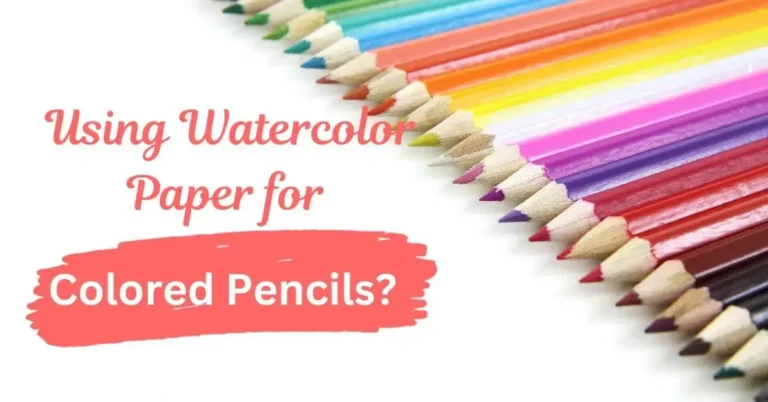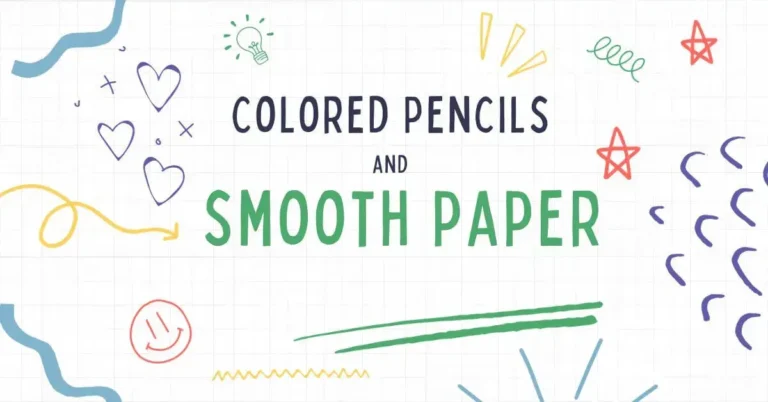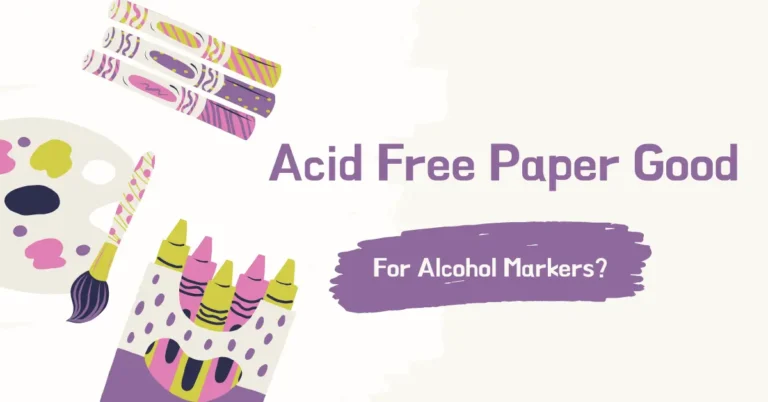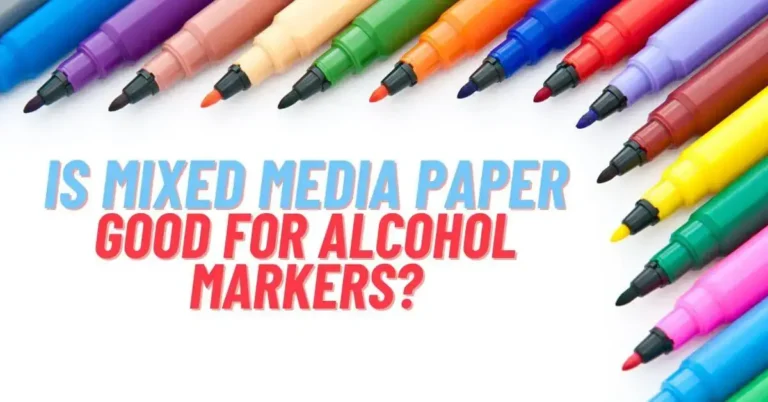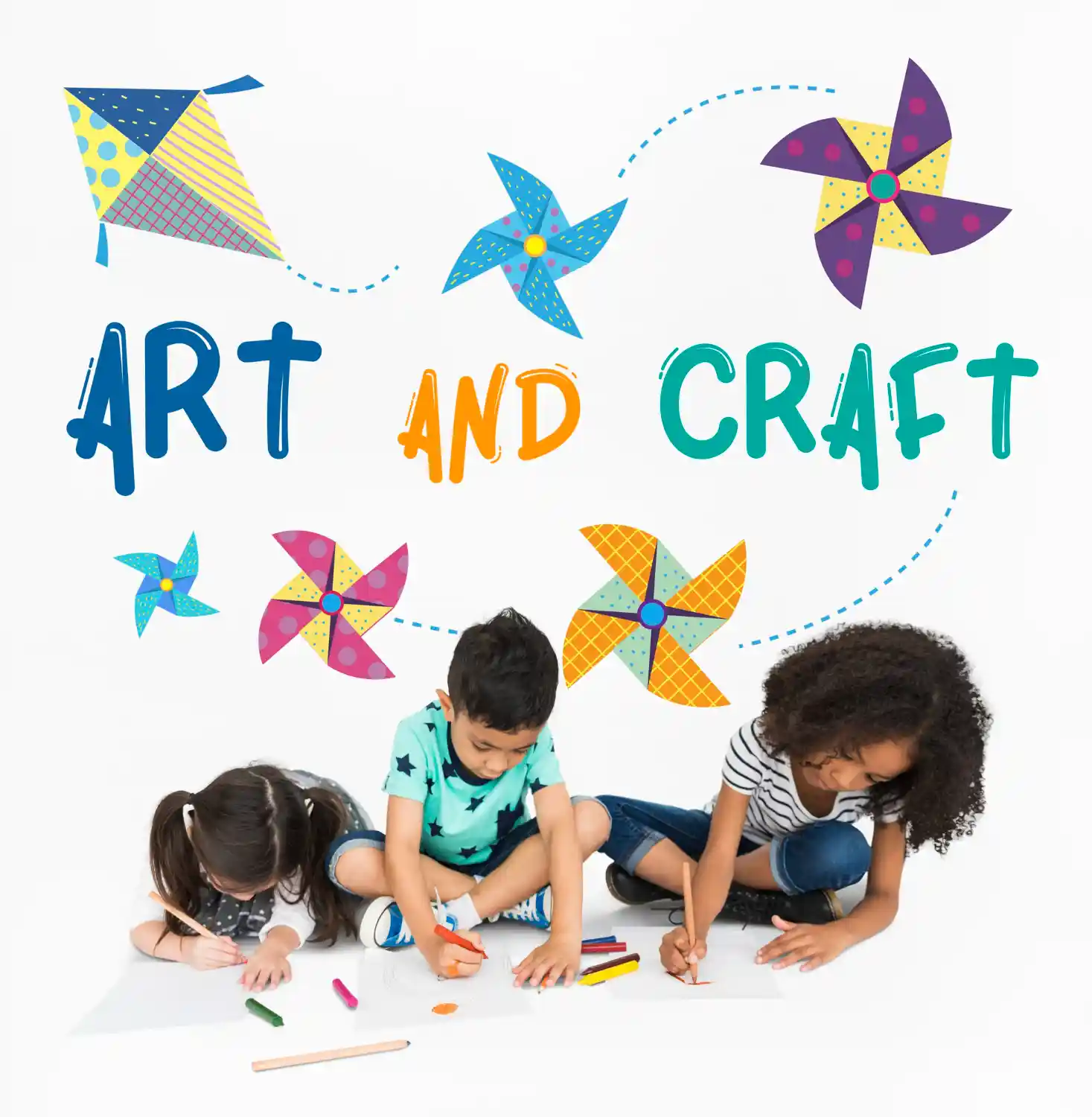What GSM of Paper is Good for Colored Pencils?
Selecting the right paper GSM (Grams per Square Meter) for colored pencil artwork is crucial to achieving optimal results. Colored pencil artists often seek a paper that provides the right balance between texture and thickness to enhance the vibrancy and longevity of their creations.
The GSM of paper refers to its weight and thickness, influencing how well it can withstand multiple layers of colored pencil applications without warping or tearing. In this pursuit, artists commonly prefer papers within the range of 120 to 180 GSM for colored pencil work.
These weights strike a harmonious balance, offering a sturdy surface that can handle intricate layering. The choice of paper GSM becomes a pivotal aspect of the artistic process, influencing the final visual impact and durability of colored pencil artworks.
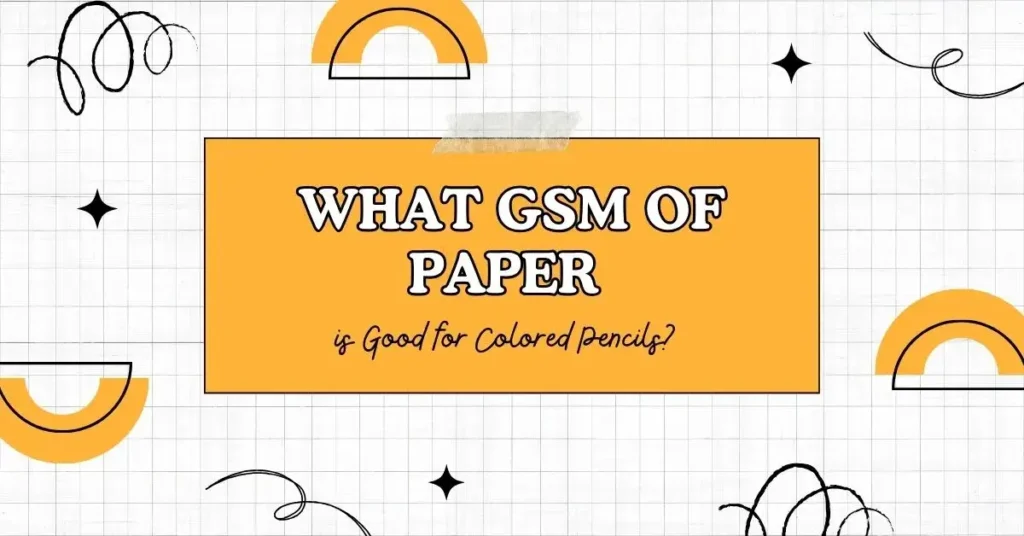
What is The Importance of Paper GSM For Colored Pencils?
The importance of paper GSM (Grams per Square Meter) in the context of colored pencils lies in its significant impact on the overall quality and appearance of the artwork. Here are key points that highlight the importance of paper GSM for colored pencils:
Weight and Thickness
GSM measures the weight and thickness of the paper, influencing how it accommodates colored pencil applications.
Heavier GSM papers are generally thicker and more robust, providing a sturdier surface for layering and preventing warping.
Color Vibrancy
The right GSM contributes to enhanced color vibrancy and saturation in colored pencil drawings.
Papers within specific GSM ranges allow pigments to adhere well, resulting in more vivid and intense colors.
Blending Capabilities
GSM affects the texture of the paper, influencing its blending properties.
Papers with the appropriate GSM offer a balance between smoothness and texture, facilitating seamless color blending for a professional finish.
Durability and Layering
Optimal GSM ensures the paper can withstand multiple layers of colored pencil applications without buckling or tearing.
This durability is crucial for artists who prefer building up layers to create depth and detail in their artwork.
Compatibility with Techniques
Different GSM papers are better suited for specific colored pencil techniques, such as burnishing, stippling, or hatching.
Artists can choose the GSM that aligns with their preferred techniques, enhancing the overall execution of their artistic vision.
Preservation of Details
The right GSM preserves fine details and nuances in colored pencil drawings.
It allows for intricate and delicate work without compromising the structural integrity of the paper.
Versatility Across Styles
Artists can select papers within a range of GSM to accommodate various styles, from highly detailed realism to more expressive and textured approaches.
This versatility enables artists to experiment and explore different artistic expressions.
Paper GSM Range for Colored Pencil Art
Choosing the right GSM (Grams per Square Meter) for colored pencil art is a critical decision that directly impacts the outcome of the artwork. Here are key points to consider regarding the paper GSM range for colored pencil art:
120-150 GSM
- Advantages and Limitations:
- Advantages include a lighter weight that is suitable for sketching and initial layers.
- However, lighter GSM papers may not withstand heavy layering or aggressive blending techniques as well as heavier options.
- Suitable Artistic Styles:
- Ideal for artists who prefer a more delicate touch, lighter GSM papers are suitable for detailed work and intricate designs.
160-180 GSM
- Benefits for Layering:
- Heavier GSM papers offer increased thickness and durability, making them suitable for layering and building up colors.
- They can handle multiple applications without warping, providing a robust surface for more complex artworks.
- Potential Downsides:
- While heavier GSM papers are great for layering, they may have a textured surface that some artists find less suitable for very detailed work.
- The increased weight may also impact portability for certain applications.
Understanding the characteristics of papers within these GSM ranges helps artists make informed decisions based on their preferred techniques and artistic styles. Lighter GSM papers cater to intricate detailing, while heavier options provide durability and support for layering, accommodating a range of artistic preferences.
Artistic Techniques for Colored Pencils on Specific GSM
Artistic techniques play a crucial role in harnessing the potential of colored pencils on specific GSM (Grams per Square Meter) papers. Here are key points discussing the application of artistic techniques in relation to different GSM ranges:
Blending Techniques
- Solvents and Tools:
- Lighter GSM papers (120-150) are conducive to meticulous blending techniques. Artists can use blending stumps or solvents for smooth color transitions without saturating the paper excessively.
- Achieving Realism:
- Heavier GSM papers (160-180) are advantageous for realistic renderings. Artists can employ blending methods that require more pressure, enhancing color saturation and creating a polished, lifelike finish.
Layering Strategies
- Building Depth:
- Lighter GSM papers are suitable for artists who prefer a more subtle approach to layering. They allow for controlled layering, gradually building depth in the artwork.
- Preserving Highlights:
- Heavier GSM papers excel in preserving highlights. Artists can confidently apply multiple layers without the risk of damaging the paper, ensuring the retention of intricate highlights and details.
Texture Manipulation
- Utilizing Surface Texture:
- Lighter GSM papers with a smoother texture are ideal for intricate detailing and fine lines, offering greater control over texture manipulation.
- Expressive Techniques:
- Heavier GSM papers with a textured surface can enhance expressive techniques like stippling or hatching. The texture adds visual interest and depth to the artwork, contributing to a more dynamic presentation.
Paper Preparation
- Testing and Experimentation:
- Before embarking on a full-fledged project, artists should conduct tests and experiments on the chosen GSM to understand how it responds to specific techniques.
- Testing helps artists adapt their approach to maximize the paper’s strengths and overcome potential challenges.
Adapting to Style Preferences
- Realism vs. Expressiveness:
- Artists can select the GSM based on their preferred style. Lighter GSM papers may cater to artists focusing on intricate details, while heavier options offer a robust foundation for more expressive, layered styles.
Understanding how various artistic techniques interact with specific GSM papers allows artists to make informed decisions that align with their creative vision. Whether aiming for detailed precision or expressive depth, the choice of GSM becomes a valuable tool in achieving desired artistic outcomes.
Common Mistakes to Avoid
Avoiding common mistakes is crucial when working with colored pencils to ensure the best possible results. Here are key points discussing common mistakes to avoid:
Overlooking GSM Importance
- Failure to Consider Paper Weight:
- Neglecting the significance of GSM in paper selection can lead to using a paper that is either too thin or too thick for the desired artistic outcome.
Incompatibility Issues with Colored Pencils
- Choosing Inappropriate Paper Surface:
- Selecting a paper with a surface that is incompatible with colored pencils, such as a highly textured paper for detailed work, can hinder the blending and layering process.
Choosing the Wrong Surface Texture
- Texture Misalignment with Techniques:
- Failing to match the paper’s surface texture with the intended artistic techniques can result in difficulties during application, affecting the overall quality of the artwork.
Inadequate Testing
- Skipping Trial Runs:
- Neglecting to conduct preliminary tests on the chosen paper can lead to unexpected challenges during the actual artwork, such as difficulty in layering or unexpected reactions to blending.
Ignoring Layering Constraints
- Overloading Thin Papers:
- Applying too many layers on lighter GSM papers without considering their saturation capacity can cause warping, compromising the structural integrity of the artwork.
Inconsistent Pressure
- Applying Uneven Pressure:
- Inconsistent pressure while coloring or blending can result in uneven color distribution and affect the overall harmony of the artwork.
Neglecting Color Harmony
- Ignoring Color Combinations:
- Failing to consider color harmonies can lead to a lack of cohesion in the final artwork. Artists should plan and experiment with color combinations to achieve the desired aesthetic.
Improper Sharpening
- Using Dull Pencils:
- Working with dull pencils can hinder precision and control. Regularly sharpening colored pencils ensures sharper lines and more refined details.
Ignoring Paper Preparation
- Not Preparing the Surface:
- Neglecting to prepare the paper surface, such as not removing dust or applying fixatives, can compromise the adherence of colored pencil pigments and affect the final appearance.
Neglecting Lightfastness
- Using Non-Lightfast Pencils:
- Overlooking the lightfastness of colored pencils can result in fading over time. It’s essential to use lightfast pencils, especially for artworks intended for display.
By being aware of and avoiding these common mistakes, artists can enhance their colored pencil work, ensuring a smoother and more successful creative process.
Tips for Testing and Experimentation
Conducting thorough testing and experimentation is a crucial aspect of working with colored pencils, allowing artists to understand the unique characteristics of their chosen paper and refine their techniques. Here are key points discussing tips for testing and experimentation:
Paper Samples and Swatches
- Create Swatches:
- Begin by creating color swatches on a small section of the chosen paper to assess how the colors interact and appear on the surface.
- Test Different Pencils:
- Experiment with various colored pencils to identify which brands or types work best with the specific paper texture and GSM.
Conducting Trials
- Layering Tests:
- Test the paper’s capacity for layering by applying multiple layers of colored pencil and observing any signs of warping or color saturation.
- Blending Experiments:
- Experiment with different blending techniques, such as using blending stumps or solvents, to determine how well the paper accommodates these methods.
Recording Observations
- Note Texture Responses:
- Record observations regarding how the paper’s texture responds to different pressure levels and blending tools.
- Document Color Vibrancy:
- Take note of the vibrancy and intensity of colors on the paper, considering how it may influence the final appearance of the artwork.
Testing Techniques
- Explore Different Styles:
- Experiment with various artistic styles, from detailed realism to more expressive and impressionistic approaches, to understand how the paper complements different techniques.
- Try Various Strokes:
- Test different stroke techniques, such as stippling, hatching, or cross-hatching, to determine the paper’s responsiveness and suitability for specific styles.
Paper Variations
- Compare Different Papers:
- If considering multiple paper options, conduct side-by-side comparisons of their performance with colored pencils to make an informed choice.
- Mixing Paper Types:
- Explore the possibility of using different GSM papers within a single artwork for varied effects, and test the compatibility of these combinations.
Adapting to Environmental Factors
- Consider Humidity Levels:
- Test how the paper reacts to changes in humidity, as environmental factors can influence the behavior of colored pencils on the surface.
- Temperature Sensitivity:
- Be mindful of temperature variations, as extreme temperatures may affect the application and blending of colored pencils.
Feedback and Iteration
- Solicit Feedback:
- Seek input from peers or mentors who have experience with colored pencils, incorporating their insights into the testing process.
- Iterate and Refine:
- Based on observations and feedback, refine techniques and make adjustments to achieve the desired results.
By incorporating these tips into the testing and experimentation phase, artists can gather valuable insights, tailor their approach to the chosen paper, and optimize their use of colored pencils for a more successful and satisfying creative experience.
Conclusion
In conclusion, the choice of paper GSM emerges as a critical factor in shaping the success of colored pencil artworks. Understanding the nuances of GSM, artists can strategically select papers that enhance color vibrancy, support layering, and complement specific techniques.
From the delicacy of lighter GSM papers to the robustness of heavier options, each choice influences the final visual impact. Through testing, experimentation, and an awareness of common pitfalls, artists can navigate the complexities of paper selection, unlocking the full potential of colored pencils.
FAQs
Here are some frequently asked queries related to colored pencil paper GSM
What is the best GSM paper for sketching/drawing?
For sketching and drawing, a versatile paper in the range of 90-120 GSM is often preferred. This weight provides a balance between thickness and manageability, accommodating various drawing techniques
Which paper is the cheapest and best for colored pencil drawing?
Lightweight sketch paper in the range of 90-120 GSM is often both cost-effective and suitable for colored pencil drawing. It provides a balance between affordability and a surface that accommodates color application.
Can you use colored pencils on regular paper?
Yes, but it’s preferable to use papers with a GSM of 90-120 for optimal results. Heavier GSM papers offer better support for layering
How do I prevent colored pencil drawings from smudging?
Fixatives can help set colored pencil drawings. Additionally, avoid resting your hand directly on the artwork and consider using a protective sheet.


